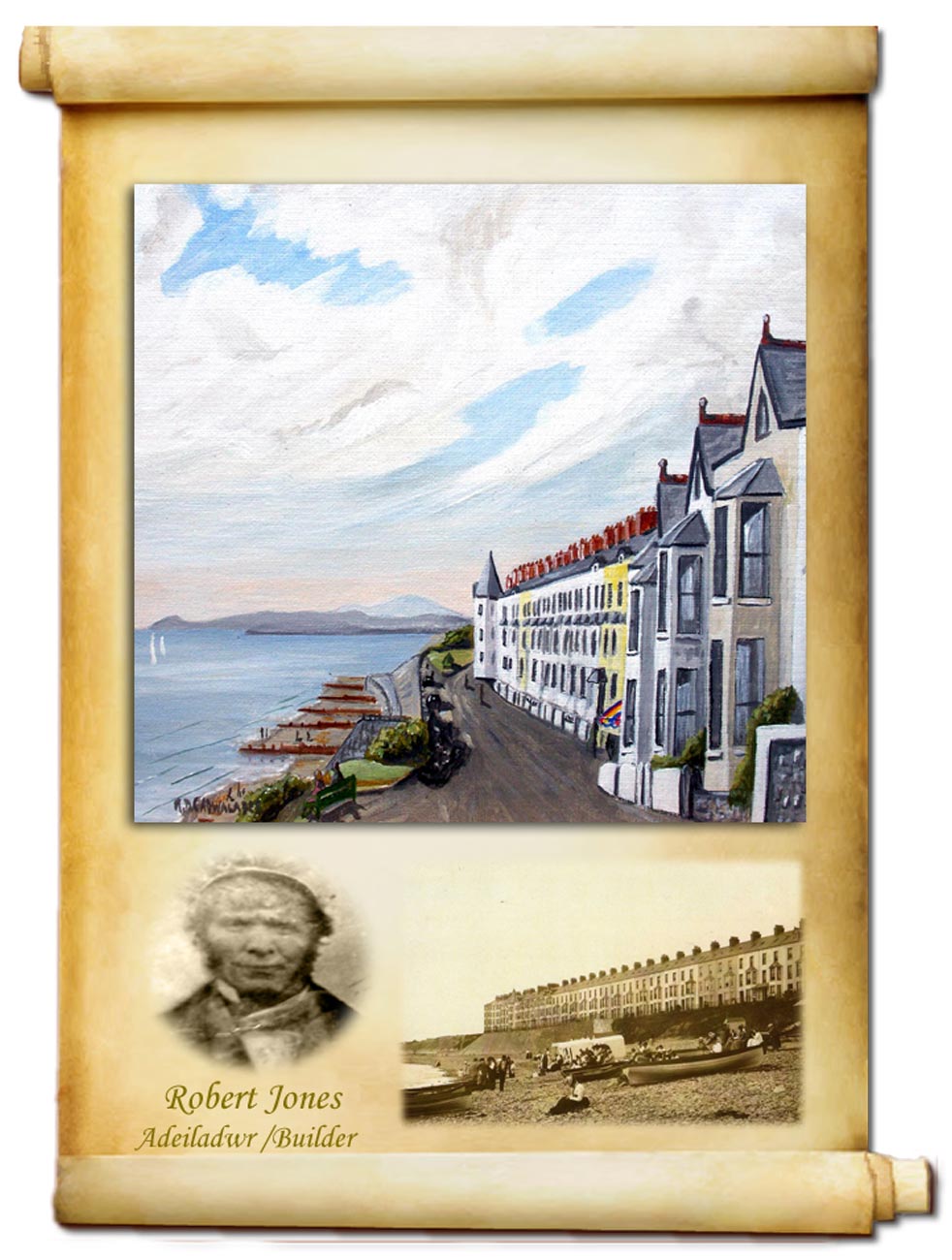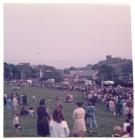Content can be downloaded for non-commercial purposes, such as for personal use or in educational resources.
For commercial purposes please contact the copyright holder directly.
Read more about the The Creative Archive Licence.
Description
During the industrial revolution cities and towns grew and holidays became popular. After the arrival of the Railway in 1867 Criccieth expanded to become a well-known seaside resort. The owners of land along the foreshore were quick to act. The first of these was William Watkins of Muriau Mawr. He had inherited land around town from his mother who was descended from one of the oldest families in the district. One piece, y Llain Hir, on the west side of the castle, was perfect for building a terrace of large houses. He went into partnership with Robert Jones and his son Thomas contractors, Corporation Terrace and Owen Owens, timber merchant from Porthmadog. O.M.Roberts architect was engaged to draw up the plans. By the summer of 1877 all was ready to start and the laying of the foundation stone was enthusiastically described in the temperance newspaper Llais y Wlad which took place on Whit Monday (May 21st) at 5pm. A procession of children and residents marched from the schoolhouse, led by the banner of the Good Templars, to Muriau Mawr, where they were joined by Mr and Mrs Watkins and their children, and then proceeded to the sea front where a large crowd had gathered. Then Miss Watkins, assisted by her brother Master Willie Watkins, took the silver trowel, and directed by Mr Thomas Jones, laid the stone. In a cavity was placed a bronze casket, containing a sum of money and newspapers. After the ceremony all the partners made speeches and then everyone moved to the schoolhouse where a concert was held followed by a lecture on temperance which was well received.
The leases were quickly taken up and the project commenced. Material poured in and stables and a yard were built at Abereistedd to store and prepare it. Stones came from the quarry at nearby Dinas, the beach (though this was later banned) and elsewhere. The leases stipulated that American Pine was to be used and timber merchants such as Owen Owens were importing huge amounts of timber to Porthmadog from Canada and Pensacola in the USA for shipbuilding and general use. Stone masons, carpenters, plasterers and labourers flocked in from the surrounding area. By the census of 1881 twenty three houses including a shop were completed, all inhabited except two. The occupants were mostly described as lodging house keepers though there was a mixture of ships Captains, annuitants (retirees), engineers, accountants and other trades and professions. Over the next 15 years number 24 was added on and then numbers 25 -30. Margaret Panky McKenzie Jones was born on Castle Street in 1909. She recalled, Marine Terrace was the smart end, most of the houses were boarding houses, the same people took them year after year, staying a month or six weeks. Families brought their maids and nannies and quite often their chauffeurs too. I remember strolling along the Terrace on a summers evening looking in at the visitors having dinner. They had all changed and had parlour maids, it was very elegant.






Do you have information to add to this item? Please leave a comment
Comments (0)
You must be logged in to leave a comment